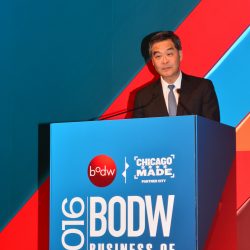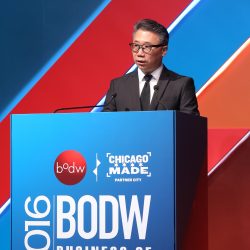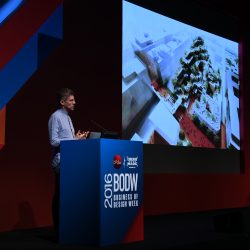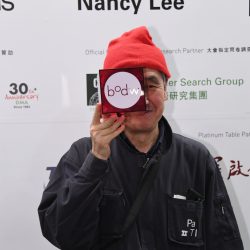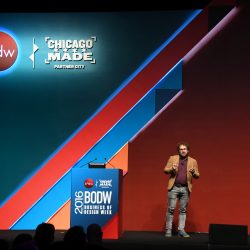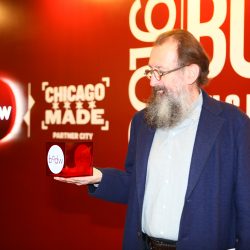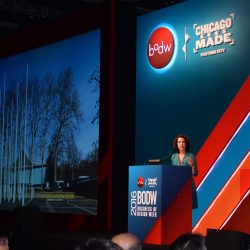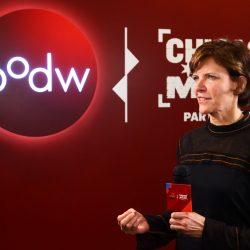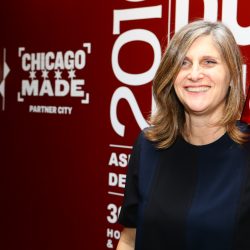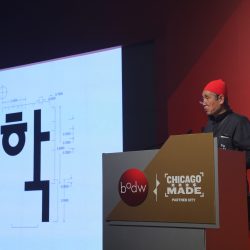THE CITIZENS OF HONG KONG NOT ONLY VALUE DESIGN FOR ITS AESTHETIC ASPECTS, BUT ALSO AS A CRUCIAL MECHANISM THAT HELPS TO PROPEL THE ECONOMY JUST AS MUCH AS SCIENCE AND ENGINEERING DO.
It has been over 15 years that the international design forum known as Business of Design Week (BODW) has changed the face of Hong Kong, turning it into one of the key hubs for design that brings business operators and designers of various disciplines from around the globe to the small island where they discuss, share and exchange interesting ideas about all things ‘design.’ From graphic and product design to food and works at a larger scale such as interior design, architecture and public space, all have continually inspired new conversations within the industry. Another highlight of the event is the collaborations between BODW and key partner cities from around the world. 2016 was Chicago’s turn as the Windy City set the theme of BODW that goes by the name of ChicagoMade.
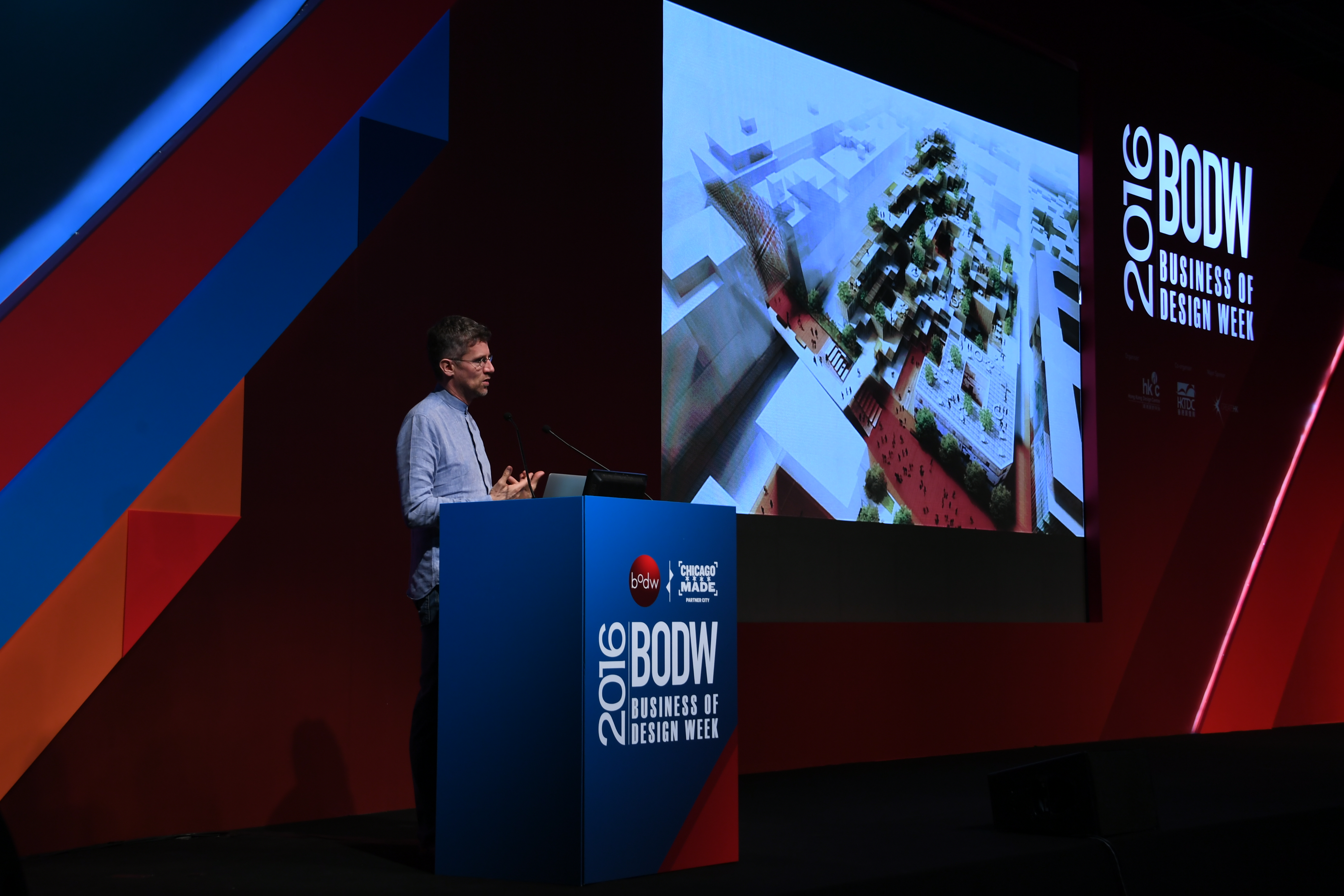
Carlo Ratti, Photo courtesy of BODW
Throughout the three days of the forum, the topics being discussed at BODW by speakers from different disciplines were not only interesting but also invited viewers to question the definition of ‘design’ (at every scale). The Director of Senseable City Lab of MIT, Carlo Ratti, who is also the former permanent curator of Expo Milan 2015’s Future Food District, shared his view on the issue of ‘architecture for food,’ as he questioned the possibilities of supermarkets in the 21st century. Jun Yamadera was featured in the forum with his Fukushima Wheel project that produces environmental sensors that can detect radiation, temperature and humidity. Used with a smartphone application, the sensor can be installed on the wheel of a bicycle, allowing for bike riding in the town after the Fukushima Daiichi nuclear disaster to be both fun and safe as the tool invites local residents and visitors to explore the area by themselves. The forum moved on to the topic of startup businesses with Scott Wilson of MINIMAL, who shared his perspective and experience as the first startup to ever raise one million dollars worth of pledges from Kickstarter and as the brand incubator behind the success of new promising startups in the business. BODW took 2016 as a chance to initiate new conversations about Food & Design where designers and masterminds behind globally renowned dinnerware products Martin Kaster of Crucial Design and Marije Vogelzang, the world’s first Eating Designer and professor of Food Non Food course at Design Academy Eindhoven, the Netherlands brought to the discussion their past projects including collaborations with a great number of Michelin Star chefs.

Martin Kastner, Photo courtesy of BODW
Apart from the discussion among new generation designers, Business of Design Week 2016 welcomed many big names such as Carol Boss Barney, a Chicago-based architect who shared creative insights through her architectural projects including the story behind the success of the revival of the downtown area around the Chicago River into a dynamic public space and Winy Maas, one of the founders of MVRDV from the Netherlands whose focus is placed primarily on sustainable urban planning and design, who discussed his interests toward Hong Kong from an architectural and urban planning perspective. The artist and botanist who invented aeroponic growing that has become the primary idea of vertical gardens, Patrick Blanc, was also invited to talk about his innovative work process. Participants also got to hear about interesting experiences from the ‘Godfather of Korean Typography,’ Ahn Sangsoo, font designer and educationist behind alternative design school, Paju Typography Institute. Closing the forum was the topic of the relationships between different fields of design and their effects on cities and cultures (particularly the partner city Chicago), shared before passing the torch over to Italy, the next partner country of BODW 2017.
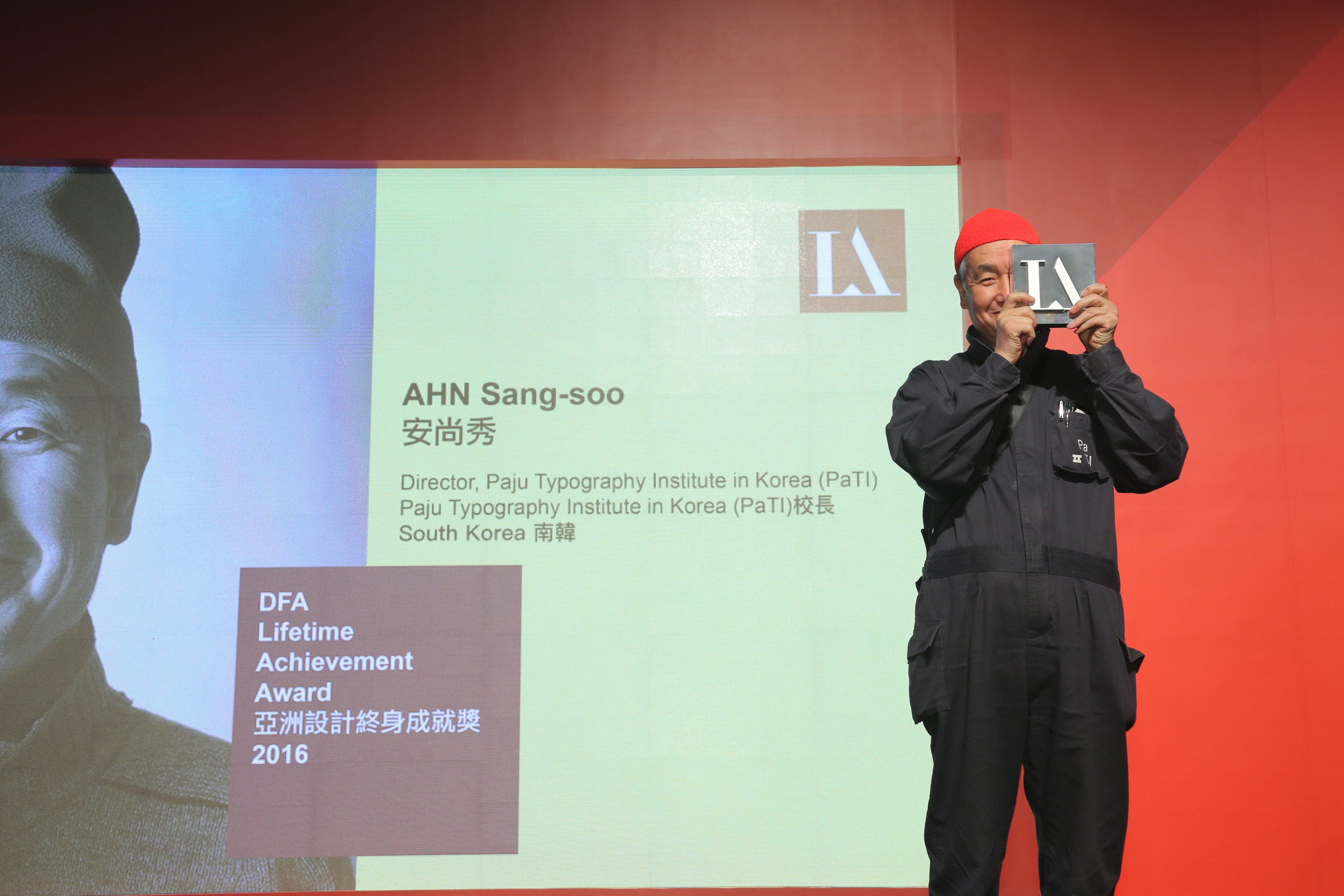
Ahn Sang Soo, Photo courtesy of BODW
It’s interesting to witness how the birth of Business of Design Week has brought a tremendous influx of ideas and creativities to this small island city known as one of the world’s most leading business hubs. The success could never happen without the governmental and private sector’s support and recognition of the important role of design on other industries, particularly the CreateHK and Hong Kong Design Centre (HKDC), projects that contribute as key driving forces behind Hong Kong’s rise as a hub of the creative industry today. Simply speaking, the citizens of Hong Kong do not value design only for its aesthetic aspects but also as a crucial mechanism that helps to propel the economy just as much as science and engineering do. Looking back at Thailand, despite the attempts and hard work done by related agencies and organizations to promote ‘creativity’ or the ‘design’ body of knowledge among the general public, as long as those who are in power and the people in this country cannot acknowledge the value of design beyond simple superficial beauty (which may not be that difficult or expensive to invest in), it will be pretty hard for Thailand to reach the status of a true Creative Country like others have. But we are still hopeful that the time of the creative environment will finally arrive, and it’s going to be here to stay.
TEXT: PAPHOP KERDSUP
www.bodw.com


